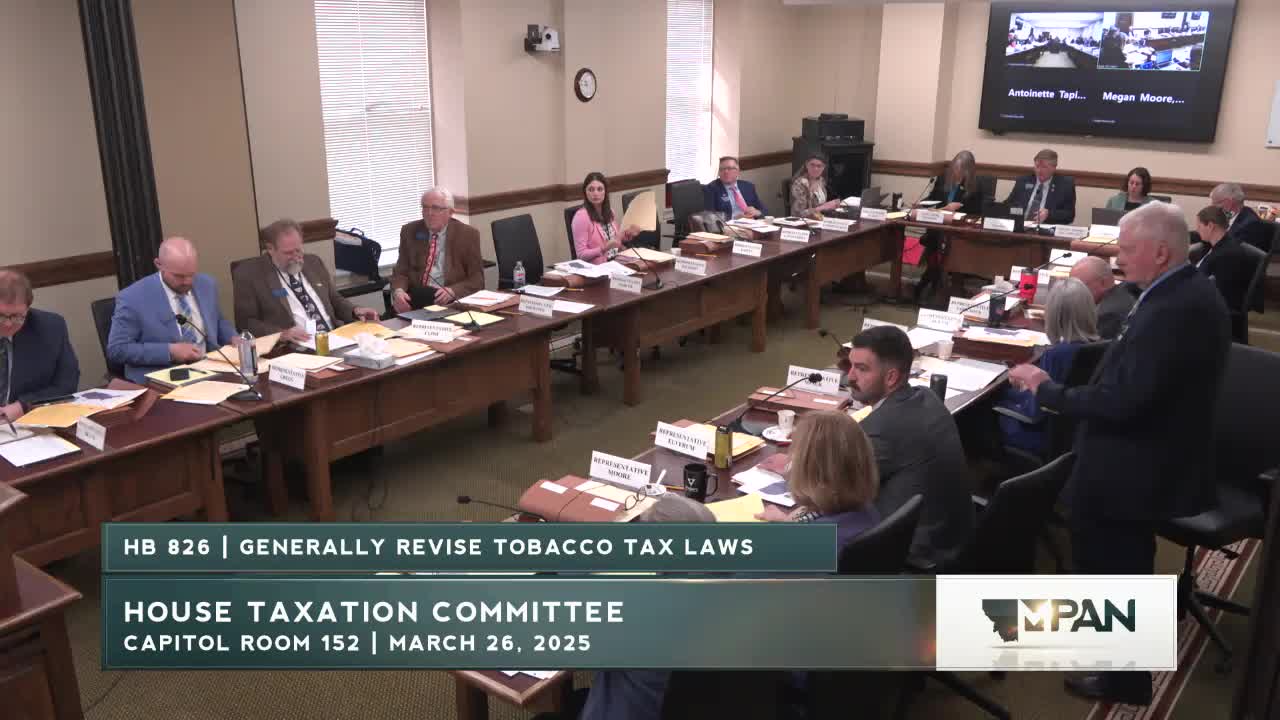Committee hears bill to raise Social Security income thresholds for Montana tax subtraction; proponents call it targeted relief
March 26, 2025 | 2025 Legislature MT, Montana
This article was created by AI summarizing key points discussed. AI makes mistakes, so for full details and context, please refer to the video of the full meeting. Please report any errors so we can fix them. Report an error »

Representative Melody Cunningham opened House Bill 827 by saying she heard Social Security income tax concerns while campaigning and proposed a measured approach to reduce the tax burden on many retirees by changing Montana’s subtraction rules for Social Security and tier‑1 railroad benefits.
Cunningham said the bill amends Montana Code Annotated 15‑30‑120 to exclude a larger portion of Social Security from state taxable income by raising the adjusted‑income thresholds (she cited increases for various filing statuses, e.g., raising joint thresholds to $77,000). She described the change as a narrower alternative to proposals that would fully exempt Social Security income and noted the fiscal note will be a consideration.
Proponents included Margie McDonald of Big Sky 55 Plus, Brian Thompson of the Association of Montana Retired Public Employees and Tim Summers of AARP Montana. They described HB 827 as a "Goldilocks" approach that would give relief to many retirees without the much larger price tag of a full exemption; proponents said fully exempting Social Security could shift costs to other state programs and jeopardize services older Montanans rely on.
Rose Bender of the Montana Budget and Policy Center expressed soft opposition, noting concerns about cumulative revenue impacts from multiple tax-cut bills this session and the long‑term effects on state revenues.
Department of Revenue income-tax specialists Brian Olson and Aaron McNay appeared as informational witnesses. Committee members asked technical questions about how the federal calculation ties to the state and how the 50% and 85% inclusion thresholds work; Olson explained the bill would create a deviation from current federal‑linked treatment by changing the state thresholds that determine when 50 percent or 85 percent of Social Security becomes part of taxable income. Olson and McNay offered to provide example calculations for committee members.
Why it matters: Montana is one of a small number of states that tax Social Security income; raising the thresholds would reduce state tax on retirement income for many filers but carries a multi‑year fiscal impact noted in the bill’s fiscal analysis.
Cunningham said the bill amends Montana Code Annotated 15‑30‑120 to exclude a larger portion of Social Security from state taxable income by raising the adjusted‑income thresholds (she cited increases for various filing statuses, e.g., raising joint thresholds to $77,000). She described the change as a narrower alternative to proposals that would fully exempt Social Security income and noted the fiscal note will be a consideration.
Proponents included Margie McDonald of Big Sky 55 Plus, Brian Thompson of the Association of Montana Retired Public Employees and Tim Summers of AARP Montana. They described HB 827 as a "Goldilocks" approach that would give relief to many retirees without the much larger price tag of a full exemption; proponents said fully exempting Social Security could shift costs to other state programs and jeopardize services older Montanans rely on.
Rose Bender of the Montana Budget and Policy Center expressed soft opposition, noting concerns about cumulative revenue impacts from multiple tax-cut bills this session and the long‑term effects on state revenues.
Department of Revenue income-tax specialists Brian Olson and Aaron McNay appeared as informational witnesses. Committee members asked technical questions about how the federal calculation ties to the state and how the 50% and 85% inclusion thresholds work; Olson explained the bill would create a deviation from current federal‑linked treatment by changing the state thresholds that determine when 50 percent or 85 percent of Social Security becomes part of taxable income. Olson and McNay offered to provide example calculations for committee members.
Why it matters: Montana is one of a small number of states that tax Social Security income; raising the thresholds would reduce state tax on retirement income for many filers but carries a multi‑year fiscal impact noted in the bill’s fiscal analysis.
View full meeting
This article is based on a recent meeting—watch the full video and explore the complete transcript for deeper insights into the discussion.
View full meeting
